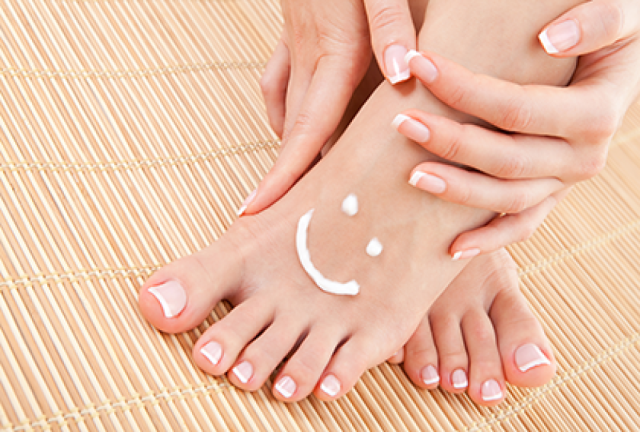Streptodermia
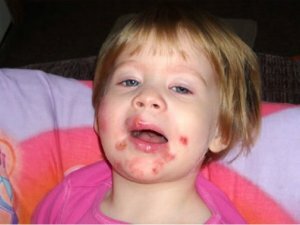 Modern medicine distinguishes skin diseases of an infectious nature that are caused by streptococcal bacteria, usually in one group - streptoderma. Such diseases include: simple facial, face, streptococcal galloping, impetigo, vulgar ectima and streptoderma. Streptodermia, like other skin diseases, is characterized by various violations of the integrity of the skin, mainly represented by scaly abscesses( from several mm to several cm).The most affected are such areas of the skin as on the face, on the back, on the legs. Sometimes after recovery, pigmentation spots appear on the site of the abscesses.
Modern medicine distinguishes skin diseases of an infectious nature that are caused by streptococcal bacteria, usually in one group - streptoderma. Such diseases include: simple facial, face, streptococcal galloping, impetigo, vulgar ectima and streptoderma. Streptodermia, like other skin diseases, is characterized by various violations of the integrity of the skin, mainly represented by scaly abscesses( from several mm to several cm).The most affected are such areas of the skin as on the face, on the back, on the legs. Sometimes after recovery, pigmentation spots appear on the site of the abscesses.
Treatment of streptodermia in children
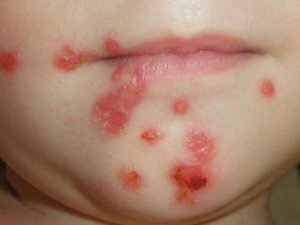 The main tasks in the treatment of streptoderma in children are the elimination of the cause of the disease( pathogen), as well as factors contributing to it, and carrying out activities aimed at increasing the body's resistance and strengthening immunity. Children are examined for the presence of diseases of the digestive and nervous systems, internal organs, check the functioning of the thyroid gland. If any violations are detected, they are eliminated. Children are treated with streptoderma in skin and venereal dispensaries.
The main tasks in the treatment of streptoderma in children are the elimination of the cause of the disease( pathogen), as well as factors contributing to it, and carrying out activities aimed at increasing the body's resistance and strengthening immunity. Children are examined for the presence of diseases of the digestive and nervous systems, internal organs, check the functioning of the thyroid gland. If any violations are detected, they are eliminated. Children are treated with streptoderma in skin and venereal dispensaries.
Drug treatment of this disease involves the use of fortifying drugs, antibiotics such as amoxicillin. If the clinical manifestation of streptodermia in children is quite severe, then prescribe drugs of the hormonal group( prednisolone and hydrocortisone).Also, in the treatment of this disease, autohemotherapy is widely used, which contributes to increasing the resistance of the child's organism to the disease and inhibits, and significantly, its development. To modern methods of treatment of streptoderma in children include laser intravenous blood irradiation, which allows you to quickly get rid of the signs of this disease. To get rid of the pain and itching apply heat and cold.
In the room where the sick child is, it is necessary to carry out daily wet cleaning with the use of disinfectants. Necessarily need to ventilate and quartze the room more often. The items used by a child who has become streptodermic should be disinfected( treated with antiseptics and boiled).In the case of children who are prone to skin itching, antihistamines are prescribed.
Recommendations for the treatment of streptodermia
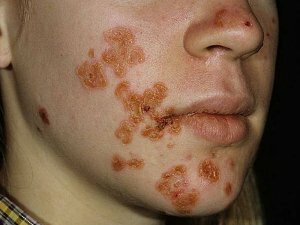 Applying powder for the skin has a soothing effect( itching sensations are alleviated), they cool and dry the baby's skin. Powder of talc, starch, white clay or zinc oxide is recommended to be applied with a cotton swab on the affected areas. Ichthyol ointments and patches are used to deeper effect on wounds. If the course of the disease is easy, then recommend resorcinol, tar or sulfur soap. To speed up the drying out of the leaky contents of the bubbles, aniline dyes( methylene blue iodine, brilliant green) are used to prevent the penetration of another infection into the wound.
Applying powder for the skin has a soothing effect( itching sensations are alleviated), they cool and dry the baby's skin. Powder of talc, starch, white clay or zinc oxide is recommended to be applied with a cotton swab on the affected areas. Ichthyol ointments and patches are used to deeper effect on wounds. If the course of the disease is easy, then recommend resorcinol, tar or sulfur soap. To speed up the drying out of the leaky contents of the bubbles, aniline dyes( methylene blue iodine, brilliant green) are used to prevent the penetration of another infection into the wound.
Surgical treatment
Surgical treatment of streptodermia is performed with chronic paronychia. Such treatment consists in removal of dead and injured tissue sites. In 10 days after the operation, complete healing of the wounds occurs. Also, the blisters formed during chronic forms of the disease are opened with a sterile needle, and then antiseptic dressings are applied. All procedures are performed in hospital settings.
Treatment of streptodermia with herbs
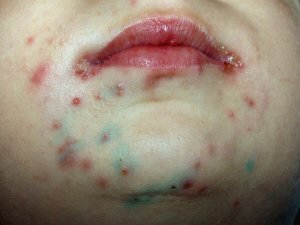 Also recently a lot of attention is paid to the treatment of streptoderma in children of herbal medicine - herbal treatment. Isolate among them garlic and onions, burdock and yarrow - they kill a stick of streptococcus. The composition of water-alcohol solutions and ointments for application to affected areas includes walnut leaves. Tincture of dog rose, echinacea is used as a general restorative. To reduce itching, tincture of plantain, chamomile, sage is used. Children with streptodermia recommend a high calorie diet. You need to eat lots of vitamins( vegetables, fruits), butter, meat( and different varieties), fish, dairy products.
Also recently a lot of attention is paid to the treatment of streptoderma in children of herbal medicine - herbal treatment. Isolate among them garlic and onions, burdock and yarrow - they kill a stick of streptococcus. The composition of water-alcohol solutions and ointments for application to affected areas includes walnut leaves. Tincture of dog rose, echinacea is used as a general restorative. To reduce itching, tincture of plantain, chamomile, sage is used. Children with streptodermia recommend a high calorie diet. You need to eat lots of vitamins( vegetables, fruits), butter, meat( and different varieties), fish, dairy products.
To avoid infection, it is necessary to process any, even the smallest, microtrauma on a child's skin. If there are signs of any skin infection, do not tighten, but immediately consult a specialist, self-treatment is quite dangerous.



